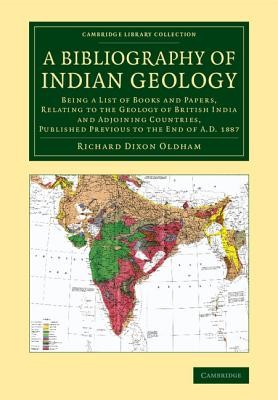
- We will send in 10–14 business days.
- Author: Richard Dixon Oldham
- Publisher: Cambridge University Press
- ISBN-10: 1108064256
- ISBN-13: 9781108064255
- Format: 17 x 24.4 x 0.9 cm, softcover
- Language: English
- SAVE -10% with code: EXTRA
Reviews
Description
Geologist and seismologist Richard Dixon Oldham (1858-1936) is best known for making two fundamental discoveries: in 1900 he identified primary, secondary and tertiary seismic waves, and in 1906 he presented evidence for the existence of the Earth's core. A fellow of the Royal Geographical Society, the Geological Society of London and the Royal Society, Oldham spent a large part of his career in Asia. Involved in the Geological Survey of India for twenty-five years, he played a key role in the development of geological research in the region (his revised Manual of the Geology in India is also reissued in this series). Originally published in 1888, the present work was the first bibliography of its kind and remains a valuable reference tool in earth sciences. Notably, Oldham chose to broaden the scope of the work by also listing papers on Indian mineralogy, geography, archaeology and botany.
EXTRA 10 % discount with code: EXTRA
The promotion ends in 17d.04:03:15
The discount code is valid when purchasing from 10 €. Discounts do not stack.
- Author: Richard Dixon Oldham
- Publisher: Cambridge University Press
- ISBN-10: 1108064256
- ISBN-13: 9781108064255
- Format: 17 x 24.4 x 0.9 cm, softcover
- Language: English English
Geologist and seismologist Richard Dixon Oldham (1858-1936) is best known for making two fundamental discoveries: in 1900 he identified primary, secondary and tertiary seismic waves, and in 1906 he presented evidence for the existence of the Earth's core. A fellow of the Royal Geographical Society, the Geological Society of London and the Royal Society, Oldham spent a large part of his career in Asia. Involved in the Geological Survey of India for twenty-five years, he played a key role in the development of geological research in the region (his revised Manual of the Geology in India is also reissued in this series). Originally published in 1888, the present work was the first bibliography of its kind and remains a valuable reference tool in earth sciences. Notably, Oldham chose to broaden the scope of the work by also listing papers on Indian mineralogy, geography, archaeology and botany.


Reviews